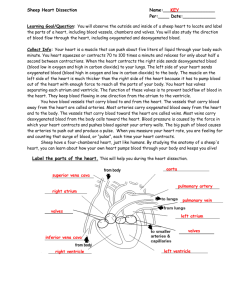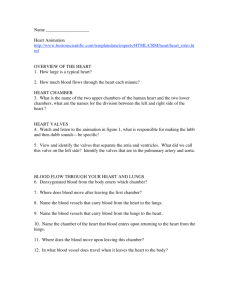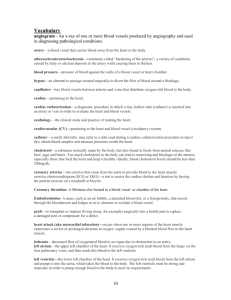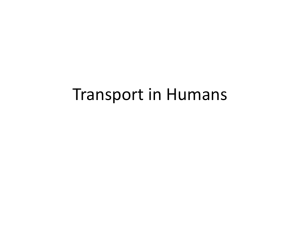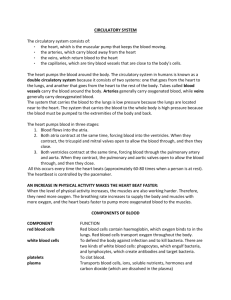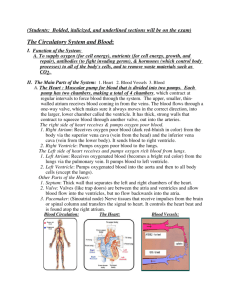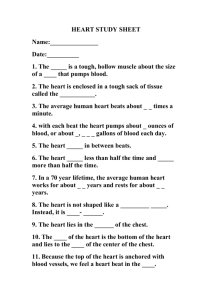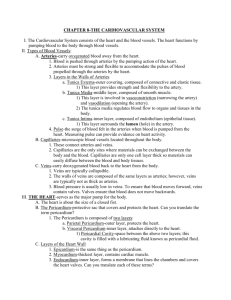The Circulatory system
advertisement
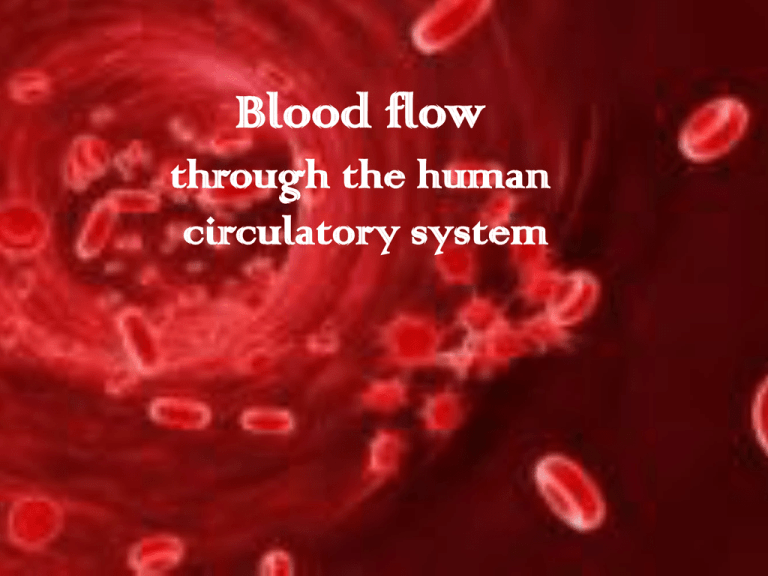
Blood flow through the human circulatory system God is Life Throughout the Old Testament God has used the symbol of blood to identify life. Leviticus 17:11 – For the life of the flesh is in the blood Exodus 7-12 – When God rescued His people from slavery, he asked them to place blood over the door posts. This was a symbol of life and protection from the angel of death. God is Life In the New Testament we see that the life blood of Jesus was shed for us to give us life. Hebrews 13:20 - The blood of Jesus began the agreement that God made with His people. Luke 22:7-20 – The cup of the new covenant in Jesus' blood poured out for us. Ephesians 1:7 - In Him we have redemption through His blood, the forgiveness of our sins, according to the riches of His grace. God is Life The life blood flowing through the human body is the essence of life. The life blood flowing through the body of Christ, (His children), is Jesus. 1 Corinthians 12:12 – Christ is like a single body, which has many parts; it is one body, even though it is made up of different parts, (GNB). Superior (from the head) Inferior (from the body) Blood is deoxygenated. Carbon dioxide has been converted to carbonic acid which is less toxic to the body. } Vena Cavae Superior Inferior Right Atrium First chamber of the heart that blood enters. Right Atrium Valves prevent the backflow of blood. As blood moves from one chamber to the next, the valves push closed behind the blood as it begins to flow back against them. Right Ventricle Second chamber of the heart that blood enters. Right Ventricle Pulmonary Artery Pulmonary artery The only artery to carry deoxygenated blood. Blood travels away from the heart to the lungs. Lungs Site of gaseous exchange: Blood taken to the lungs has some CO2 removed by diffusion and 02 is diffused into the blood. Pulmonary Vein The only vein to carry oxygenated Pulmonary veins blood. Blood travels away from the lungs back to the heart. Left Atrium The third chamber of the heart that blood enters. Left Atrium Valves prevent the backflow of blood. As blood moves from one chamber to the next, the valves push closed behind the blood as it begins to flow back against them. Left Ventricle The fourth chamber of the heart that blood enters. This has the thickest wall of all chambers in the heart. Left Ventricle Aorta The main artery of the body, taking oxygenated blood away from the heart to the head and body. Circular and longitudinal muscles lining the walls ensure blood pressure is maintained as blood pulses around the body. Arteries Thick, elastic, muscular walls maintain high pressure, as oxygenated blood surges around the body. Aorta Arterioles Small elastic arteries branching from the main arteries, bring oxygenated blood toward the body cells. Capillaries Extremely narrow blood vessels wrap around major organs of the body and also weave their way throughout the body tissues bringing O2 to the cells and pick up CO2 to be carried back to the lungs to exit the body. Vein Venule Artery Arteriole Capillary network Venules Fine veins take deoxygenated blood away from the capillary beds and direct blood toward the heart. Veins Thin walled vessels, containing valves – to prevent backflow of blood – continue the journey of deoxygenated blood back toward the heart culminating in the vena cavae. Artery Comparison of the three types of blood vessels References: http://health.allrefer.com/pictures-images/heart-valves.html http://www.childrensheartinstitute.org/educate/heartwrk/blood flw.htm patient.co.uk medical-artist.com http://www.fotosearch.com/photos-images/aorta.html http://www.harunyahya.com/images_books/images_designinna ture/arteries.jpg http://en.wikipedia.org/wiki/File:Veincrosssection.svg
